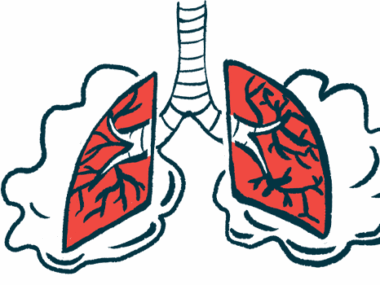Updated guidelines urge LEMS testing for lung cancer patients
Cancer center network recommendation may 'drive greater awareness'
Written by |

The National Comprehensive Cancer Network (NCCN), a nonprofit alliance of more than 30 cancer centers across the U.S., has now included recommendations for testing for and managing Lambert-Eaton myasthenic syndrome (LEMS) in its updated guidelines for managing small cell lung cancer.
While LEMS — an immune condition marked by muscle weakness and fatigue — can develop in individuals who don’t have cancer, about half of people with the autoimmune disease have an underlying cancer, most commonly small cell lung cancer, or SCLC.
The updates to the NCCN recommendations were announced by Catalyst Pharmaceuticals, the company that markets Firdapse (amifampridine), an approved LEMS therapy.
“The NCCN guidelines are a trusted standard for guiding treatment decisions, and we believe this update will drive greater awareness,” William Andrews, MD, Catalyst’s chief medical officer, said in a company press release. “Ultimately, it will help patients, caregivers, and healthcare providers make more informed choices when addressing this serious unmet need.”
According to Catalyst, approximately 3% of SCLC patients have LEMS. But most people with both conditions remain undiagnosed with the autoimmune disease, meaning patients may be experiencing uncontrolled LEMS symptoms in addition to any potential side effects from cancer treatment.
Testing for LEMS, and then managing the condition if diagnosed, could potentially lead to better outcomes for patients, per Catalyst.
New guidelines suggest Firdapse as treatment for LEMS/cancer patients
LEMS is caused by the immune system producing antibodies that target voltage-gated calcium channels, which are proteins that play a key role in the process of nerve-muscle communication required for muscle contraction. LEMS is diagnosed mainly by tests looking for these disease-driving antibodies.
The new NCCN guidelines suggest testing for these antibodies and performing neurological evaluations in SCLC patients so that any individuals with LEMS can be promptly and accurately diagnosed.
“Early diagnosis of LEMS in SCLC is critical, as it may enable patients to have better outcomes if their LEMS symptoms are effectively treated while fighting SCLC,” Andrews said. “Accurate identification through VGCC antibody testing and comprehensive neurological evaluation is essential.”
Early diagnosis of LEMS in [small cell lung cancer, or] SCLC is critical, as it may enable patients to have better outcomes if their LEMS symptoms are effectively treated while fighting SCLC.
In individuals with SCLC who are diagnosed with LEMS, the new guidelines suggest that Firdapse may be considered as a potential treatment following consultations with clinicians who have expertise in neurology.
In the U.S., Firdapse is the only therapy approved for LEMS, indicated for use in both adults and children. The daily oral therapy is designed to help increase the strength of signals sent from nerve to muscle cells, thereby helping to improve muscle strength.






